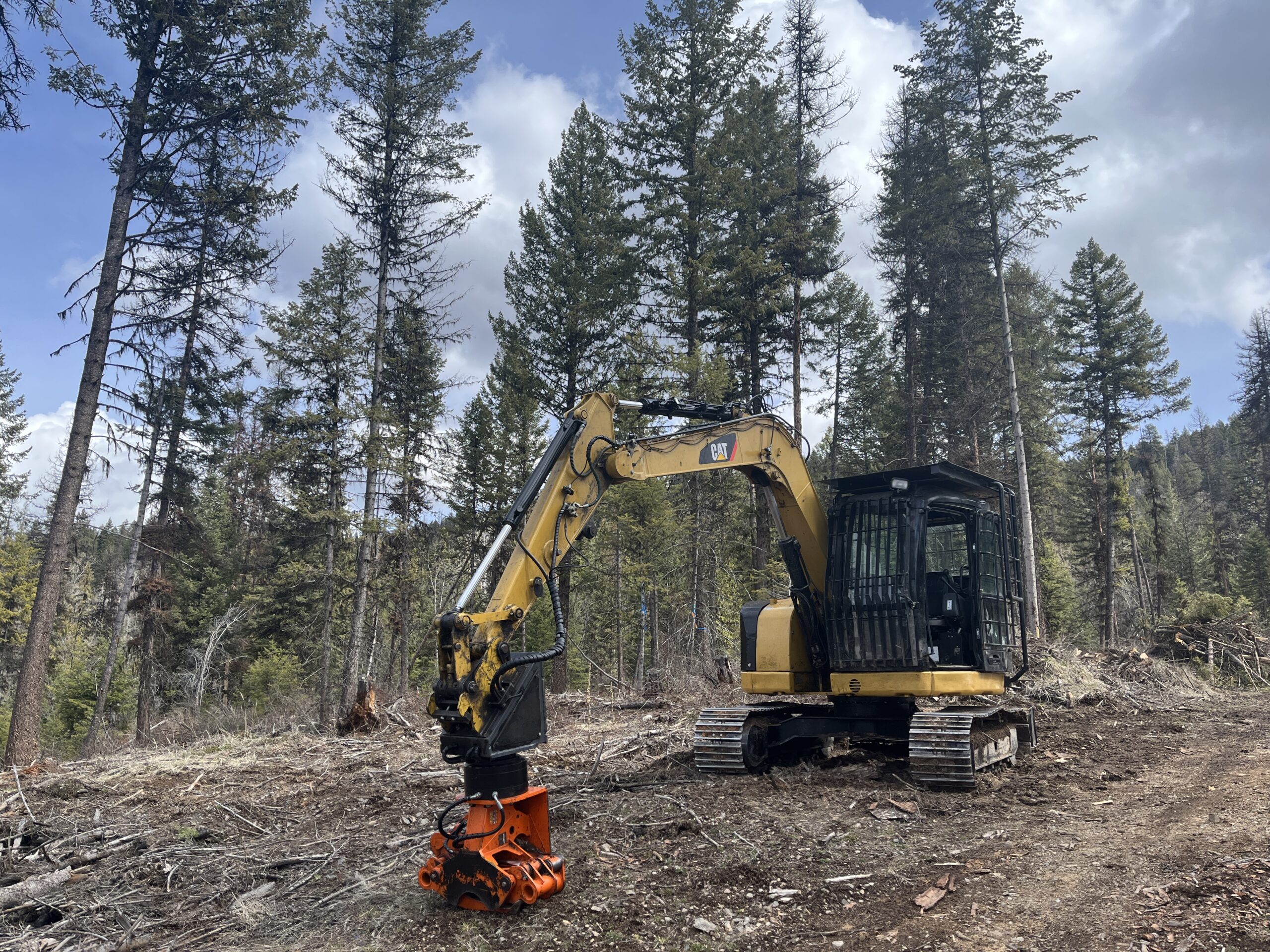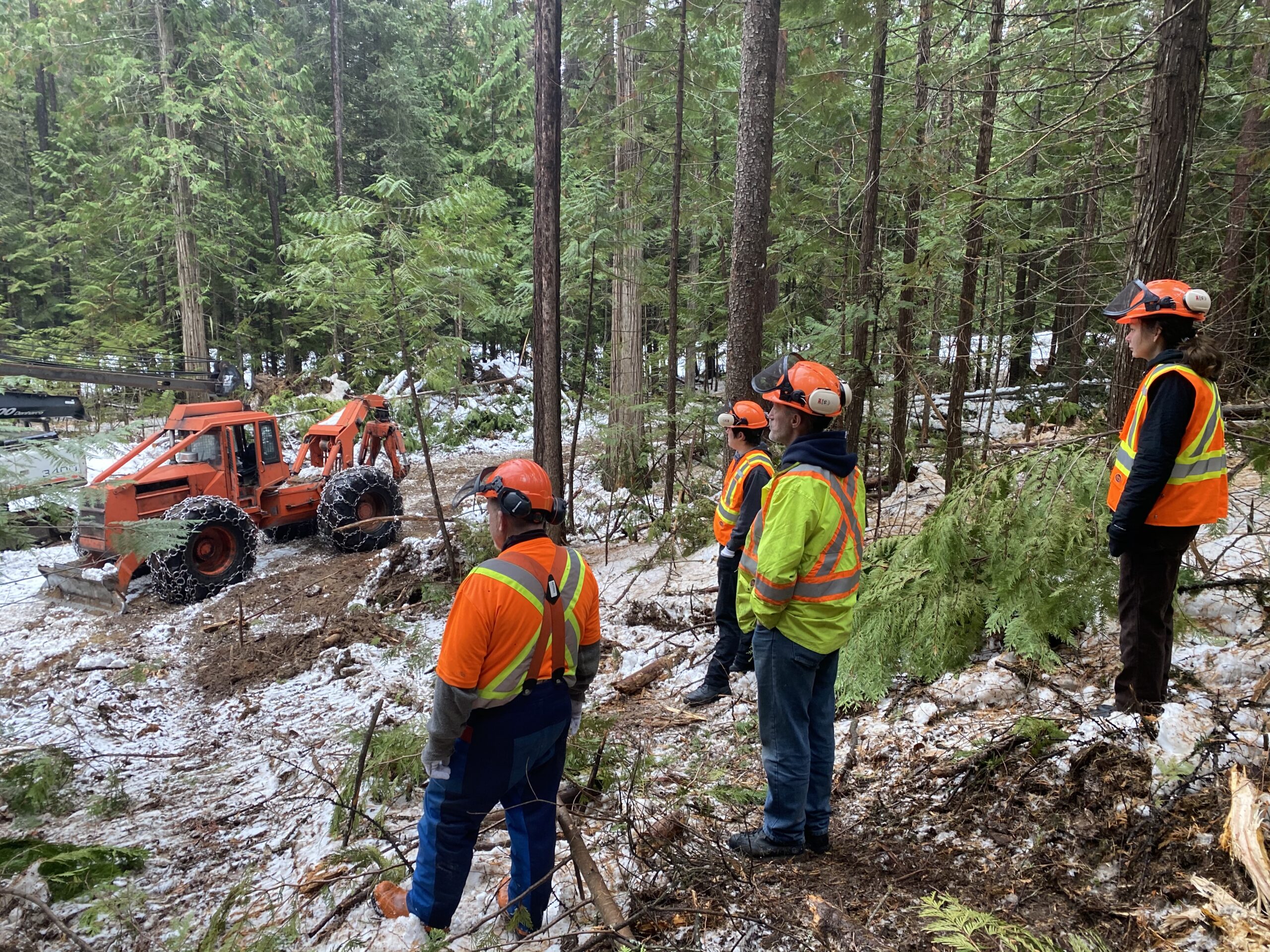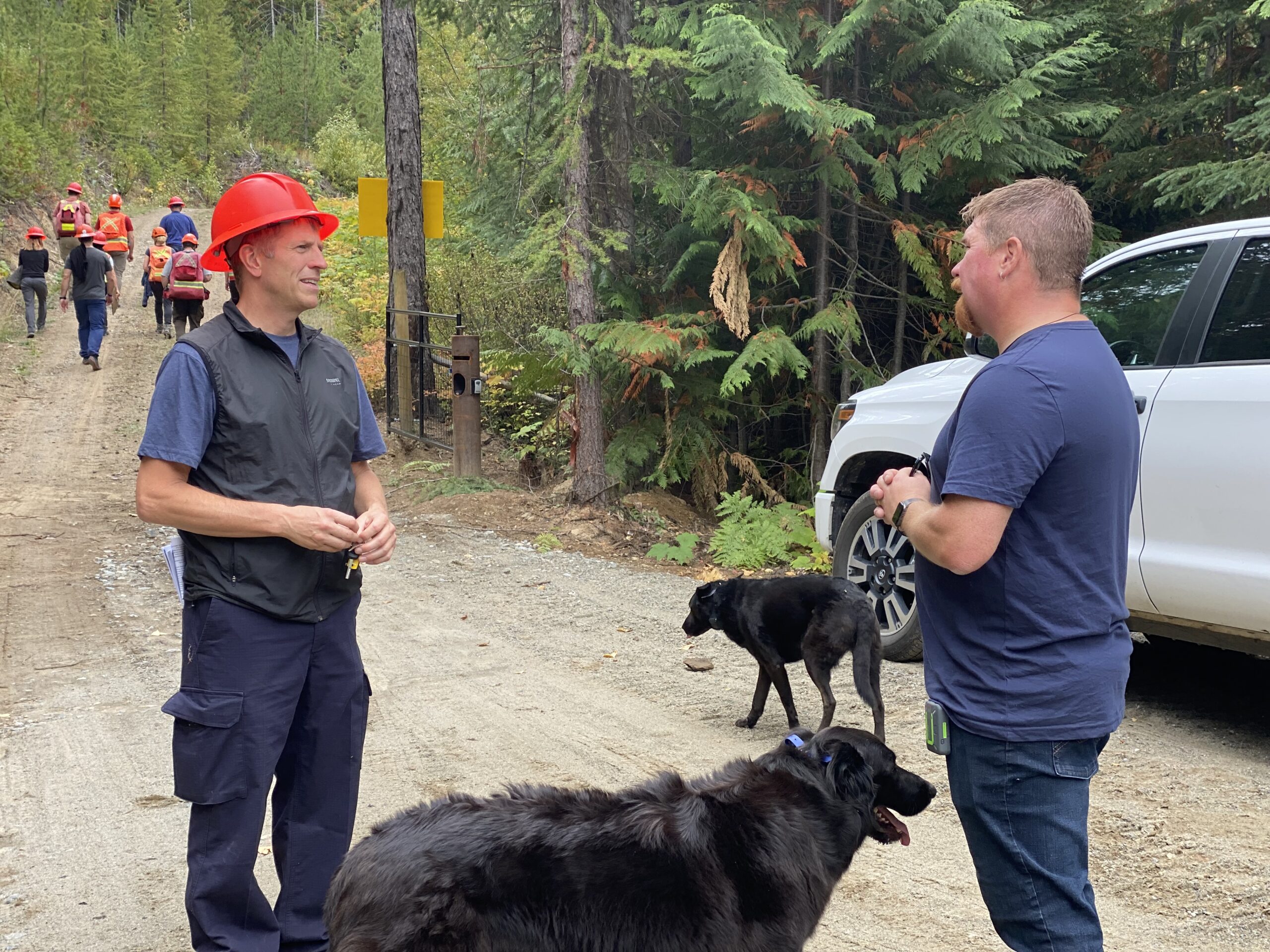A First Nations Band Works to Reduce Wildfire Risk to the Community
Creates Shaded Fuel Break Along Baldy Road Corridor
Osoyoos, B.C. – Extending its reach from South Okanagan into the Kootenay Boundary region, the Osoyoos Indian Band (OIB) has taken a lead role in a project important to users of Mount Baldy. Made possible with funding from the Forest Enhancement Society of BC (FESBC), this project centres on creating an 8.5-kilometre fuel break (a cleared or managed area in a forest where vegetation is intentionally reduced or removed to help prevent or slow the spread of wildfires) along Mt. Baldy Road, squarely aimed at mitigating the persistent wildfire threat to the infrastructure at Mt. Baldy and creating a safer egress route for public and firefighting crews in the event of a wildfire.
“B.C. has experienced a devastating wildfire season, and given the effects of climate change, mitigating wildfire risk is vital for keeping people, communities and First Nations in B.C. safe – now more than ever,” said Bruce Ralston, Minister of Forests. “FESBC has undertaken many wildfire risk reduction projects, bringing concrete benefits in areas throughout the province. It is encouraging to see this effort continue in the South Okanagan and Kootenay Boundary regions in partnership with the Osoyoos Indian Band.”
Baldy Road is a corridor that has numerous homes located along its 16-kilometre stretch. As well, the Baldy Mountain Resort, a recreational haven in the area and year-round community, is located at the north end along with key infrastructure and accessibility routes.
Peter Flett, operations manager with Nk’Mip Forestry—OIB’s forestry department—emphasized the importance of this OIB-directed and supervised project in the area, and said, “Completion of this fuel treatment will decrease the risk of a high-intensity wildfire starting along the corridor by removing surface, ladder, and crown fuels in areas where the forest is dense and overgrown. In short, treating this long linear stretch of road will reduce the wildfire risk to the surrounding areas.”
Sharen Gibbs, Regional Director of Area E, West Boundary, and an area resident, agreed with Flett on the importance of the project and expressed how natural resources, with proper management, can support local economies and the environment to grow communities with foresight and consideration for future generations.
“The collaboration of Dan Macmaster, (Osoyoos Indian Band Forestry Manager), Peter Flett, and the Osoyoos Indian Band has been instrumental in attaining these goals. Understanding that while there may be concerns with over-logging in the province, this project focuses on fuel mitigation, and the Baldy Mountain Corridor will benefit immensely from this work. It will thin 100 metres off of the roadway of trees and debris, reducing fire hazards substantially and creating jobs. Much work has already been done by Baldy Mountain Resort and the residents of Baldy Mountain through the FireSmart Program,” said Gibbs. “It’s great news that the Forest Enhancement Society of BC will be funding this project and that clean-up will be done in conjunction with wood harvesting.”
The Nk’Mip Forestry team has completed the prescriptions of the area including a comprehensive roadmap for how to address wildfire risk while also conducting an archeological survey of the area. The wildfire risk reduction work will begin this fall.
According to James Katasonoff, wildfire officer with the BC Wildfire Service’s Southeast Fire Centre, while the Baldy Road project provides many benefits in maintaining a vital access or egress route, the improved feature will prove to be a viable control line during future suppression efforts in the area if wildfires were to occur as well.
“Historical and recent large fires evidence the fire-prone and dependent ecosystem in the Mt. Baldy area. The South face of Mt. Baldy, where the project is located, has been void of fire for decades, within a maturing and increasing fuel-loaded forest stand. Having this significant access/egress route protected and acting as a potential control line feature for the BC Wildfire Service is a significant benefit to community wildfire risk mitigation and will help save considerable time during fire suppression. The treatment will help keep fire intensity reduced and avoid crown fire and spotting potential directly on the fire edge if it were to become part of the perimeter control line,” Katasonoff said.
Katasonoff also acknowledged how great it has been to work with Dan Macmaster, Peter Flett and the OIB, on landscape-level mitigation projects and prescribed fire projects and said that working through challenges together and getting to know the individuals personally has developed a great working relationship.
“Wildfire mitigation and prescribed fire projects in critical areas are important to communities and society. Projects must remain viable from a financial standpoint, so the work is completed. FESBC remains a critical lifeline to the completion of high-value community protection projects,” Katasonoff added.
All disturbance to the land requires review by the First Nations’ lands department and if they deem an area to have archeological potential, often a preliminary field reconnaissance (PFR), designed to assess the potential for archeological sites within an area, is required.
“When a PFR is requested by OIB, we send out an archeologist and an OIB technician to ground-truth the area to identify any key features or landforms that may warrant modifications to the treatment plan or complete avoidance,” explained Flett.
For the Baldy Road Corridor project, Brenda Gould, president at Similkameen Consulting, was hired to work on the archeological survey. Gould believes it is important to conduct archaeological studies on the land before proceeding with wildfire risk reduction activities to ensure that legally protected sites are not inadvertently impacted.
“Archaeology sites are often invisible and their precise locations are not publicly available. As such, sites can be inadvertently impacted by machinery, tree planting, fires, etc.; anything that can disturb the surface of the ground can cause impacts. I also say ‘inadvertently’, because I don’t believe people purposefully want to wreck a site,” said Gould.
Archaeological sites are automatically protected under the Heritage Conservation Act and altering them is illegal without a permit. In the case of wildfire risk reduction activities, these cause less disturbance than regular forestry harvesting so it is usually very easy to ensure site protection without compromising the activities meant to protect people and properties.
“The Baldy wildfire reduction survey was interesting. We found one previously recorded archaeological site just inside the boundary of one of the areas which meant that the boundary had to be pulled back a few metres. In other areas, we found a historic campsite, probably from within the last 50 years and a few huckleberry patches,” said Gould, adding, “It’s always a great day working with the OIB crew. And, as foresters, Dan and Peter pay special attention to Indigenous values when planning forestry activities and respond positively to recommendations. When archaeologists and forestry engineers work collaboratively, solutions can almost always be found so that all interests can be fully met.”
Brian Watson, operations manager with FESBC said, “I am impressed by the Osoyoos Indian Band’s commitment to preserving Indigenous values throughout their work. I am impressed by how they integrate the results of the archaeological survey and other Indigenous values seamlessly into wildfire risk reduction efforts. This holistic approach aligns perfectly with the values and goals of FESBC, and we are incredibly proud to support their invaluable contributions to the preservation of our forests and communities.”
Overall, the project champions a holistic perspective that covers a rich collection of values—visual, historical, and ecological, and showcases the community’s firm commitment to safeguarding its future.
“Our forests are burning at a devastating rate, having incredible impacts on wildlife, communities and personal well-being. It’s time for British Columbians to wake up and start being proactive and managing our forests for a future of wildfires. We can no longer hope our communities will be spared or saved by wildfire crews. When we have a mild fire season, we cannot forget the panic and suffering we experience during the severe fire seasons. Managing our forests for wildfire at the scale needed to see significant impacts comes with compromises, and these are the discussions we need to be having,” said Flett, adding, “Funding from FESBC is crucial for this project to occur. The standards of fuel reduction are very high to ensure adequate benefits are provided by the treatment. As a result, these treatments are not economical without financial assistance.”
FESBC would like to gratefully acknowledge the financial support of the Province of British Columbia through the Ministry of Forests.



